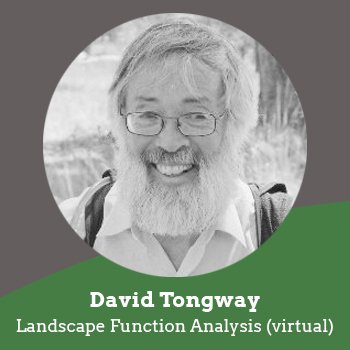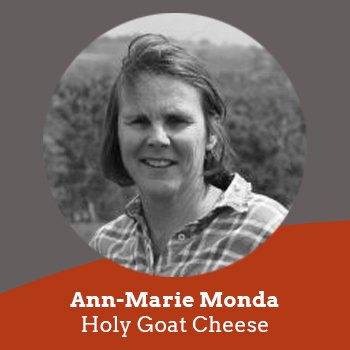Leaky Landscapes Symposium
“As we prepare our homes for fire seasons, we also need to prepare the environment for future climates.”
“This symposium has reinforced the need for holistic healing of country, biodiversity, soil, water, interactions and Traditional Owner practice and knowledge”
- Parks Victoria
This Symposium looked at practical approaches to fixing the damaged landscapes of central Victoria making them more absorbent (less leaky) and so more biologically productive and better able to withstand the impacts of climate change.
It was a forum for researchers, conservation practitioners, landholders and land managers and interested community members to share information and experiences, form connections and develop collaborative and strategic approaches to ecosystem restoration that specifically aim to restore and climate-proof damaged landscapes by rebuilding soil health and water holding capacity for carbon, hydrology, productivity and biodiversity (improved habitat/resources for threatened species) benefits.
Even though we might feel that urgent global action on emissions reduction is out of our hands, there are things we can do to better prepare our backyards and local landscapes for the worst impacts of Climate Change.
This forum showcases the 21st century strategies and practical case studies that have been largely missing from policy debates about local environment climate change mitigation.
“There is so much more that needs to be done and can be done if we work together effectively to make it happen.”
Restoring and climate proofing our environment is widely recognised as being essential to helping biodiversity adapt to climate change – but what is less well understood is how to do this.
Many of our natural systems are less healthy, biodiverse and productive than they once were, due to histories of degradation through gold mining, timber cutting and agriculture. Their soils are no longer porous enough to absorb rainfall so less water is available to the landscape and its food webs. Hotter, drier, more variable weather brought on by climate change is amplifying the ‘desertification’ of environments.
Climate change is significantly impacting natural ecosystems and is a major compounding pressure on many already threatened species. Adapting to the impacts of climate change that are here and those locked in to occur in the future with the amount of greenhouse gases already in the atmosphere is essential to avoid mass species extinctions.
It brought together leading researchers, exemplar projects and interested practitioners in an event exploring the science and practice of improving the hydrological function of forest & woodland ecosystems, in order to support people to take practical actions to building climate resilience in their local regions. Although these areas may no longer be subject to degrading disturbances (eg. regrowth bushland), they are more often than not locked into a degraded, ‘desertified’ or leaky state and will struggle to ever produce the healthy and diverse habitat they once did without targeted intervention and restoration.
Leaky Landscapes symposium report
We have published a report that outlines the key demographics, outcomes and feedback from our Leaky Landscapes symposium which is now available to view online.
Thank you to everyone who attended, contributed and to those who completed the post-event survey.
Field trip - April 1st 2022
Presentations by
Paul Foreman, Biolinks Alliance Ecologist
Jon Fawcett, CDM Smith Principal Hydrogeologist
Dr David Tongway, Landscape Function Analysis (virtual presentation)
Ann-Marie Monda, Holy Goat Cheese
2021 Online Symposium
Keynote presentations including audience Q&A
Dr David Tongway - “The application of Landscape Function Analysis (LFA) to the Restoration of Disturbed Landscapes” and Dr Jon Fawcett - CDM Smith “Understanding hydrological and sub-soil dynamics”
Professor David Watson - “Facilitating recovery: marshalling food web dynamics and engaging landholders to keep our woodlands thriving” and Professor David Eldridge UNSW- “Harnessing the activity of soil disturbing animals to restore degraded woodlands”
Darren J. Doherty, CPAg (AIA) - Regarians "Global Examples of Regenerative Agroecology in Ecosystem Restoration"
Regenerative agriculture workshop
Regenerative agriculture has been at the forefront of the development of systems and tools to restore water-availability and soil health of landscapes - seeking techniques that require reading how ecosystems and landscapes function and working with natural processes to repair them. This workshop will showcase exemplary properties and projects that have undertaken rehydration and restoration works in production settings. How can regenerative agriculture be a meaningful part of the solution to Australia’s biodiversity crisis, will be a key focus of discussion in the workshop.
Gillian Sanbrook - Farmer - Regenerative agriculture at Bibbaringa;
Justin Weaver - Farmer and President, Holistic Farm Management Group
Graeme Hand - Educator Hand for the Land - ‘Safe to Fail’ practices strips, an experimental approach to implementing regenerative grazing
Peter Hazell, - The Mulloon Institute - Mulloon Rehydration Initiative, a catchment scale rehydration project
Remnant habitat workshop
This workshop showcases ecological restoration projects designed to repair the hydrological function, soil health and associated biodiversity of damaged ‘natural’ bushland that has been highly altered by past land uses. Under discussion will be practical approaches for restoration, learnings from trials and how trials can be scaled-up for greater impact at landscape scales.
Peter Mitchell - Restoration of Australian Light Horse Memorial Park
Shane Monk and Paul Foreman - Spring Plains Watershed Repair project
Gary Hendy - Practitioner at Treehead Quarter “Practical considerations for Ecological thinning”
Patrick Pigott - Parks Victoria’s Box Ironbark forest ecological thinning trials
Glen Norris - Bush Heritage Australia
“We need to be braver and think harder, like David Tongway says - revegetation should not be the first step”
- Mallee Conservation
“Landscape Functional Analysis (LFA) is a useful compounding/integrating concept, and well-illustrated with mistletoe and native veg
- Bushland volunteer
Speaker profiles
David Tongway - “The application of Landscape Function Analysis (LFA) to the Restoration of Disturbed Landscapes”
David Tongway trained as a metallurgical chemist at Bendigo School of Mines and was briefly a Patent Examiner before an appointment at the CSIRO Deniliquin Laboratory in 1966. Denilab was switching from irrigated agriculture to semi-arid rangelands at this time, necessitating field and lab work in the Rangelands. His career was greatly advanced by the friendly mentoring from senior scientists in CSIRO Soils Division in areas from pedology, soil physics, chemistry, and biology to land system survey. From 1975 he concentrated on issues about “soil health”, finding the area somewhat under-researched and subjective. The first iteration of what was to become Landscape Function Analysis was implemented in 1984 and repeatedly refined as new soil types and landscapes became available for study. By 1995, the procedure was “user-ready” and 2500 copies of the Manual were distributed to enquirers. This time coincided with the development of Landscape Ecology among applied ecologists, where a wide range of disciplines were enabled to cooperate, facilitated by the maturity of the contributing disciplines and the capability of computers in complex analyses of diverse data. From 1995, the LFA procedure was applied to rehabilitating mine sites, finding that very little modification was needed because the principles had been well worked through. The period from 1995 also brought invitations to contribute to International Congresses in the broadly soil health, heterogeneity and rehabilitation areas. Several books and chapters for about 20 other books were written. He retired from CSIRO in 2003 but continues to mentor graduate students from universities in Australia and South Africa. He was awarded the AM in the 2015 Queen’s Birthday Honours.
Jon Fawcett - “Understanding hydrological and sub-soil dynamics”
Jon has 20 years’ experience in the field of hydrogeology and soil water landscape studies related to salinity, soil water dynamics, groundwater dependent ecosystems and groundwater resource assessments.
Jon expertise residues in combining knowledge of how groundwater systems and the water requirements of ecosystems interact. Jon was involved in nationally significant foundation projects regarding groundwater dependent ecosystems, the national Atlas of Groundwater Dependent Ecosystems (www.bom.gov.au), was the technical lead in the Surat CMA Baseline Springs Monitoring Program and worked as a senior research hydrogeologist at the Department of Primary Industries (PIRVic) for 8 years and researched groundwater and surface water interaction dynamics via projects related to dryland salinity, salt mobilisation and catchment water balance processes.
Dave Watson - “Facilitating recovery: marshalling food web dynamics and engaging landholders to keep our woodlands thriving”
Dave Watson is a Professor of Ecology at Charles Sturt University, where he leads a group of researchers working at the interface between community ecology and landscape-scale restoration. He completed his Bachelor of Science at Monash University in the early 90’s, undertaking his Honours research on the determinants of bird diversity in Buloke woodlands in the Wimmera. As well as discovering mistletoes and first noticing their importance for woodland birds, he realized the mismatch between the recently modified landscapes he was studying and the slow responses of many biological processes to habitat fragmentation. Keen to learn more about these long-term effects he moved to the US for his PhD, based at The University of Kansas and studied cloud forests in the highlands of Mexico and Central America, forests that shrank to their present-day extent more than 20,000 years ago. In addition to distributional dynamics, Dave’s research has focused on developing new ways to estimate diversity, pioneering the use of results-based stopping rules to standardize diversity estimates and collaborating with computer scientists to detect species automatically from long-duration recordings. Having recently established the Australian Acoustic Observatory with a team of other researchers, Dave’s current research extends to sandalwood management in the western desert, wildlife conservation in agricultural landscapes, and mistletoe ecology and evolution worldwide. He lives with his family and a variety of other animals on a property near Albury.
Darren J. Doherty, CPAg (AIA) - “Global Examples of Regenerative Agroecology in Ecosystem Restoration"
Darren J. Doherty, CPAg (AIA) is a farm planner who is the founder of Regrarians Ltd. and the Regrarians Platform®—the world's most comprehensive agroecological landscape, enterprise and training framework. Since 1993, Darren has worked with ten's of thousand of people around the world and since 2004 has been a key figure in introducing regenerative agriculture to many continents, most notably with his 'Soil, Water & Carbon for Every Farm' (2007), 'Carbon Farming and Economy' (2008/9), RegenAG® (2010/11) and REX® (2016-19) world tours. Together with Andrew Jeeves and Georgi Pavlov, Darren is leading the 'Regrarians Handbook' project—which Joel Salatin has hailed as, "...the most comprehensive encyclopaedic treatment of all the topics we hold dear than anything I’ve ever seen, or imagined..." Darren grew up and lives on Dja Dja Wurrung country in central Victoria, Australia, with his wife Lisa Heenan, their daughters, Isaebella & Pearl and son Zane—all of whom own and run Cream Town, an organic café/restaurant and creatives hub.
David Eldridge - “Harnessing the activity of soil disturbing animals to restore degraded woodlands”
David Eldridge is Professor at the School of Biological, Earth and Environmental Sciences, University of NSW, Sydney, Australia. He has more than 40 years of experience in rangeland management and assessment, and the ecology of dryland systems. He is an editor of the Journal of Arid Environments and Restoration Ecology and has published over 250 papers in international journals. Over the past decade David’s research has focused on the effects of grazing on ecological processes, shrub encroachment, animal effects on soils and the ecology and management of biological soil crusts.
Gillian Sanbrook - “Regenerative agriculture at Bibbaringa cattle” presented as part of the Regenerative Agriculture workshop
Gillian achieved a Diploma of Farm Management Glenormiston Agriculture College. She had a career as a Rural Journalist with Countryman Newspaper in WA and Western Farmer and Grazier, Freelance journalist in Australia and South Africa. Gillian pursued a marketing career in South Africa.
For the past 21 years Gillian worked with David Taylor to build up the Pooginook Merino Stud at Jerilderie. In 2003 Gillian established Natural Instinct Wool Company an Australian manufacturing and marketing company that produce woollen outerwear for corporate wear.
During 2009 she started an art investment group, Artstream with 40 people from the Albury and Riverina district to buy art. Artstream ran successfully for 10 year project. From the experience with regenerative agriculture and Artstream she established Earth Canvas Incorporated. An art and regenerative farming project to get land managers to look at the landscape from a creative perspective and engage everyone with healthy soil and landscapes. Currently Gillian manages Bibbaringa cattle property at Bowna east of Albury NSW and Earth Canvas Inc.
Graeme Hand - “‘Safe to Fail’ practices strips, an experimental approach to implementing regenerative grazing” presented as part of the Regenerative Agriculture workshop
Graeme has worked as an industrial chemist, international marketer, meat industry consultant as well as farm consultant to many family and corporate farmers. He has trained farmers and herders and spoken at Universities and conferences in Mongolia, India, Brazil, USA and Canada. He has a special interest in working with family farms helping to create profitable, sustainable farm businesses which are enjoyable to work in.
Graeme farms beef cattle in NSW and runs his own consultancy and training business and has delivered workshops across Australia & internationally to cropping and grazing farmers on farm financial health checks, planned grazing and forage & cover cropping. The material in these workshops is from on ground and research and has been confirmed that it works in practice.
Peter Hazell from Mulloon Institute - “Mulloon Rehydration Initiative, a catchment scale rehydration project” presented as part of the Regenerative Agriculture workshop
Peter has 15 years’ experience in the development and delivery of landscape rehydration works in both the public and private sectors. Peter provides on-ground advice and prepares Landscape Rehydration Plans while navigating the social, legal and technical complexities of natural resource management to achieve significant on-ground outcomes. He specialises in: Landscape planning, Landscape regeneration, Water Science, Ecology, Geomorphology, Community-based NRM and Policy analysis.
Peter is responsible for the implementation of the catchment scale Mulloon Rehydration Initiative. He worked as a Remote Sensing Specialist within the Environmental Research and Information Consortium and was an Australian Government NRM Facilitator (Landcare & Biodiversity). Peter was the first Landcare Coordinator in the Upper Shoalhaven Catchment, NSW. He and his wife, Donna, are also currently rehabilitating a 374ha farm in the Mongarlowe watershed, NSW based on principles of regenerative agriculture
Peter Mitchell - “Restoration of Australian Light Horse Memorial Park” presented as part of the Remnant Habitat workshop
Peter Mitchell has a PhD in Zoology and a wide working experience of the natural world, including a period running a bird observatory, teaching Natural Resource Management at TAFE, Landcare Coordinator based in Broadford followed by period delivering NRM Programs with the then Department of Primary Industries. Since “retiring”. he has worked with other organisations assessing and advising on management of public and private land in the region, and been closely involved in several local community groups focussing on local reserves, on wider Landcare and Council programs, and on even wider environmental issues. He and partner Barbara are also busy creating a garden for wildlife in Seymour.
Paul Foreman - “The Spring Plains Watershed Repair project" presented as part of the Remnant Habitat workshop
Paul is an ecologist and botanist and with over 30 years of experience in a range of technical, strategic and management roles across Victoria and Australia. Paul has worked in State and Local Government as well as Trust for Nature and Bush Heritage Australia, and established his own consulting business in 2009. He is also currently researching the role of Aboriginal burning in grasslands and was the inaugural chair for Biolinks Alliance. Alongside the Biolinks Alliance Executive Director, Sophie Bickford, Paul has spearheaded our involvement in leaky landscape repair and is actively involved in the ecological planning and on-ground works for the Spring Plains Watershed Repair project, which is part of Biolinks Alliance's Heathcote Local 2 Landscape program.
Gary Hendy from TreeheadQuarters - “Practical considerations for Ecological thinning” presented as part of the Remnant Habitat workshop
Diploma Arboriculture. Diploma Conservation & Land Management. Director Treeheadquarters PTY LTD Environmental Services Business. I/Tree Headquarters has been providing positive environmental management services since 2005. With a focus on the practical application of ‘Doing the work’. The work is varied and includes Bio-diversity establishment planting. Pest plant and animal control. Ecological thinning. Working with State government & local government authorities, Conservation organizations, Committee of management groups and private land holders.
Patrick Pigott from Parks Victoria - “Box Ironbark forest ecological thinning trials” presented as part of the Remnant Habitat workshop
Patrick Pigott works as a Research Ecologist with Parks Victoria's Environment & Science Division, in the Environmental Research Partnerships & Programs Unit. He has extensive experience working on large environmental management initiatives across the Government, private and University sector. Current activity includes working with Research Partner students and scientists, and providing advice to Parks Victoria staff on implementation of environmental projects. Some of the ecological research and strategic planning issues Patrick has worked on over the years include conservation of remnant vegetation, environmental weeds and pest animals, and ecological thinning in box-ironbark and river redgum forests.
Glen Norris From Bush Heritage Australia - “The importance of addressing landscape functionality in ecosystem restoration initiatives - A pilot project at Nardoo Hills in Central Victoria” presented as part of the Remnant Habitat workshop
For over 14 years Glen has worked for the national NGO Bush Heritage across various operational roles including large-scale arid zone reserve management and state-wide regional management. These roles have seen Glen apply his skills in both on-ground and high level project management and community engagement with a focus on natural resource management, and have spanned a period where the organisation has achieved significant success and growth. With a background in civil construction and earthmoving, Glen is passionate about restoration projects that consider the key elements to landscape function such as hydrology, rain use efficiency, functional plant diversity, and historical disturbance regimes; aspiring to build resilience into natural ecosystems that face increasing challenges. If you haven’t met a tree-hugging dozer driver before you have now..!
Climate proofing landscapes
Read about our leaky landscape restoration.
























